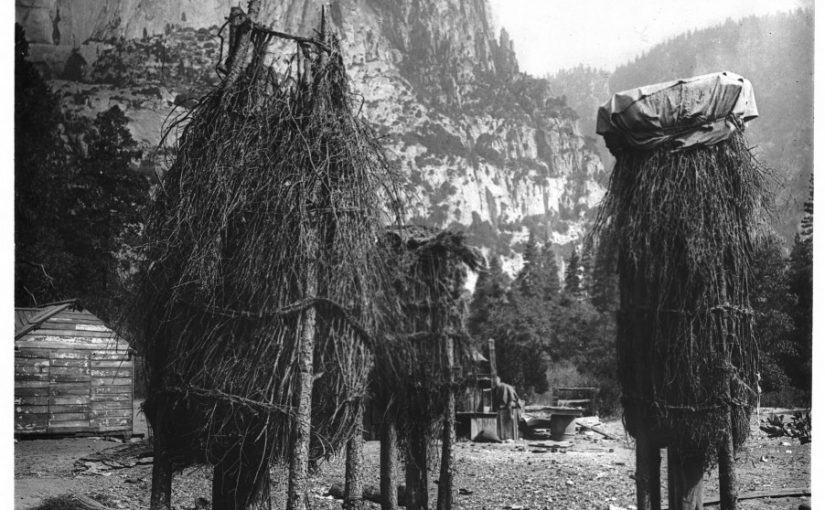The California black oak, tan oak, and coast live oak all yield delicious and edible acorns in large quantities. Before the arrival of settlers to the west coast of America, acorns were the second-most traded commodity next to salt.[1] Estimates of the beginning of intensive harvest of acorns date to at least 2500 BCE in Central California.[2] Acorns are more nutritionally and calorically dense than cereal grains. Settling farmers brought with them their favourite livestock and seeds, such as pigs, cattle, and wheat. As Euro-agrarian settlement took place all over California, the management of oak trees by Native Californians was halted. By intentionally burning the understory of oak trees, a strong acorn crop was more likely to be yielded. It’s documented that the Cloverdale Pomo, the Kashaya Pomo, the Wappo, the Yurok and Tolowa, the Luiseno, the Maidu, and the Ohlone all burned to manage and encourage oak habitat. [3]
[1] Anderson, K. (2005). Tending the wild: Native American knowledge and the management of California’s natural resources. pg. 286. Univ of California Press.
[2] Anderson, K. (2005). Tending the wild: Native American knowledge and the management of California’s natural resources. pg. 287. Univ of California Press.
[3] Anderson, K. (2005). Tending the wild: Native American knowledge and the management of California’s natural resources. pg. 287. Univ of California Press.
